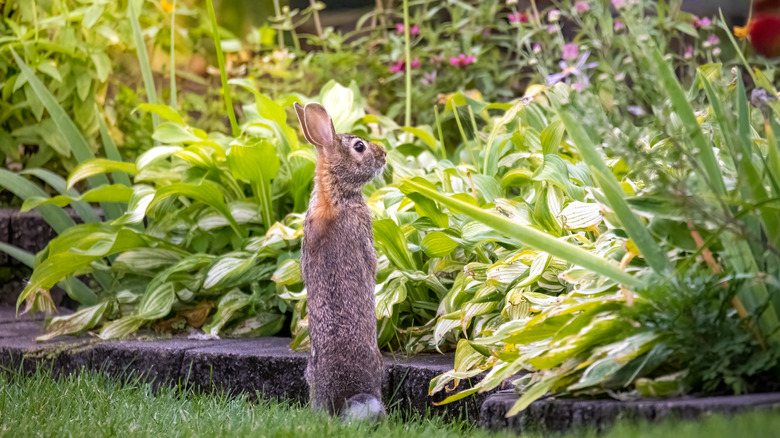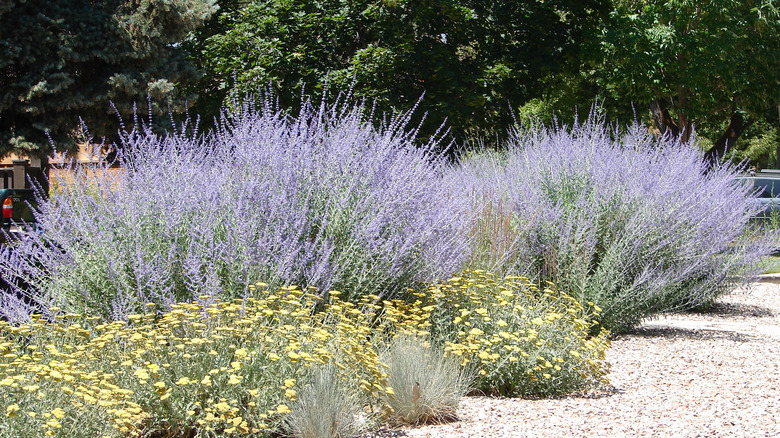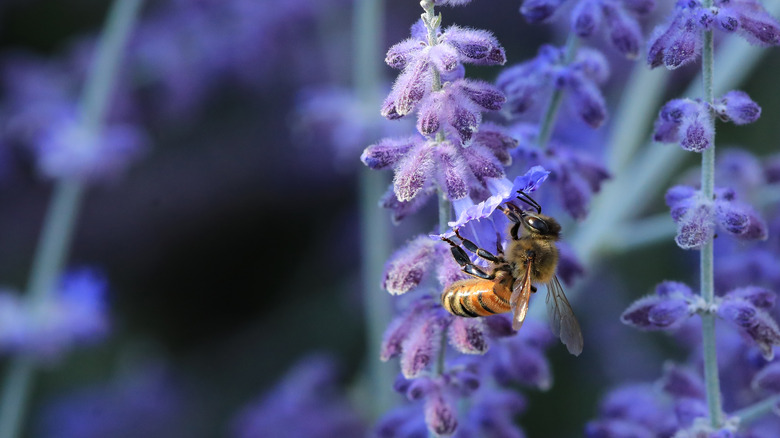If Rabbits Keep Ruining Your Lavender, Plant Its Fragrant Lookalike Instead
The rich scent and light purple blooms of lavender make it a favorite for everything from lush gardens and dried bouquets to scented items like sachets, perfumes, candles, and essential oils. While a field or garden full of lavender looks stunning and evokes the famous lavender fields of Provence, lavender is sometimes a little too enticing. This means the plant often falls victim to munching by local wildlife, including rabbits, who love it as a favorite snack. Often lavender plants don't survive the growing season in more rural areas. If your local wildlife has been sampling your lavender a little too much, a very similar plant may be the solution Russian sage.
Russian sage (perovskia atriplicifolia) closely resembles its cousin the lavender plant in many ways, including a profusion of large tubular-shaped blooms in a distinctive lavender or light purplish shade that can often be mistaken for lavender plants. Russian sage is a member of the mint family; despite its name, it is not a variety of sage. Russian sage's scent, however, is far more pungent than lavender, with many describing it as a plant with the more menthol notes of mint and a slightly herbal scent resembling lavender.
What is Russian Sage?
Russsian sage grows best in USDA zones 4-9 but thrives best in warmer climates, where the plants can grow quite large at 3-4 feet tall in width and height. The gray-green leaves each spring give way to lavender-shaded flowers that last from midsummer through the first frost. In winter, Russian sage sports silver-white stems that look beautiful on frosty mornings. Russian sage is also incredibly resistant to drought and does best in clay and medium soil with good drainage.
While its small light bluish-purple blooms and similar scent can often be mistaken for lavender by humans, rabbits will know the difference and stay away, making the sage a hearty alternative to the more tasty lavender plants that become damaged from being eaten. It is also a perennial, which means it will return and spread a bit each growing season, making it excellent for no-fuss gardeners.
How to use Russian Sage
Russian sage makes a great element to add to any garden for both its beauty and draw for other kinds of fauna like bees, hummingbirds, and butterflies, particularly when planted along with other herbs and flowers popular with insects and birds like goldenrod and milkweed. Together, they make a heavenly scented garden, but one that usually proves a little too pungent to be especially tasty to the local mammals and pests, which keep them from devouring the leaves of the Russian sage. Plant it alone or as a border around flower beds as a preventative measure.
Dried Russian sage is often used for sachets and potpourri, particularly since its scent is slightly more noticeable and pungent than similar flowers and the small purple blooms make a lovely contrast to other dried blossoms. Unlike lavender, however, its blooms can be slightly toxic, so it is not recommended for edible uses. Russian sage essential oil also can be used as a deterrent for ants and beetles.


